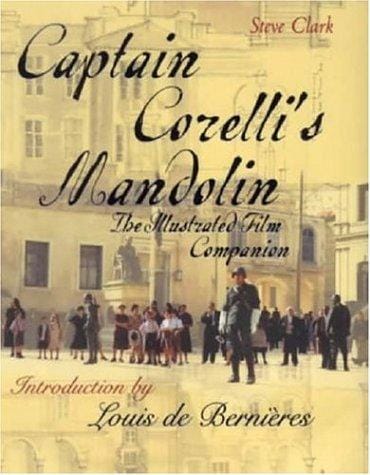Captain Corelli's Mandolin: A Timeless Tale of Love, War and Music
Explore the plot, characters and themes of Captain Corelli's Mandolin in this concise, spoiler-conscious guide to Louis de Bernières' beloved wartime novel.

Introduction
Few modern novels blend romance, tragedy and history as seamlessly as Louis de Bernières’ 1994 masterpiece, Captain Corelli’s Mandolin. Set against the dazzling backdrop of the Greek island of Cephalonia during World War II, the book has captivated millions with its lyrical prose, unforgettable characters and piercing insights into the madness of war. Whether you are a literature student, a historical-fiction enthusiast, or a casual reader hunting for your next page-turner, this 800-word guide will give you a comprehensive, spoiler-conscious overview of why Captain Corelli’s Mandolin deserves a place on your shelf.
Overview of Captain Corelli’s Mandolin
At its core, the novel tells the story of Pelagia, the strong-willed daughter of the village doctor, and Antonio Corelli, an irreverent Italian officer billeted in her home after Mussolini’s forces occupy Greece. What begins as reluctant coexistence slowly deepens into a tender romance, complicated by Pelagia’s prior engagement to the local fisherman, Mandras, and by the ever-darkening shadow of global conflict. De Bernières weaves comedic interludes with harrowing depictions of occupation, resistance and betrayal, crafting a multi-layered narrative that spans several decades and perspectives.
The Historical Backdrop
The Ionian Islands fell under Axis control in 1941, first by Italian troops and later by the Germans after Italy’s armistice in 1943. De Bernières meticulously researches this period, highlighting both the camaraderie and the brutality that defined daily life. He references real events such as the Massacre of the Acqui Division, where thousands of Italian soldiers were executed by their former German allies. By grounding his fictional plot in authentic history, the author turns Cephalonia into more than a picturesque setting; it becomes a microcosm of Europe’s wartime upheavals.
Main Characters
Pelagia embodies resilience and intellectual curiosity, studying medicine under her father’s tutelage at a time when few Greek women had formal education. Captain Antonio Corelli, meanwhile, is a passionate musician whose beloved mandolin, Antonia, symbolizes the transformative power of art amidst chaos. Mandras represents the tragic arc of nationalism: a sweet, illiterate fisherman who becomes radicalized by war and returns scarred in body and spirit. Surrounding them are vivid secondary figures such as Dr. Iannis, who chronicles the island’s folklore, and the enigmatic priest Father Arsenios, whose comic relief masks deeper philosophical questions about faith and survival.
Key Themes and Motifs
Love versus war is the novel’s central dialectic, but de Bernières interrogates it from multiple angles. Romantic love blooms between Pelagia and Corelli, parental love anchors Dr. Iannis, and patriotic love motivates Mandras. War systematically tests each of these bonds, asking whether humanity’s better angels can endure systemic violence. Music, specifically Corelli’s mandolin playing, acts as both a literal and symbolic balm, illustrating art’s capacity to transcend linguistic and political boundaries. The island itself is another motif: its earthquakes mirror the social ruptures the characters experience, while its enduring beauty underscores the possibility of regeneration.
Literary Style and Narrative Techniques
De Bernières’ style marries the epic scope of magical realism with the intimacy of a village chronicle. He shifts effortlessly from omniscient passages that survey the broader conflict to close third-person chapters that spotlight individual characters’ inner turmoil. Dialect, folklore and snatches of letters lend authenticity, while comic set pieces—such as drunken goats wandering through town—offer tonal relief without trivializing the horrors of occupation. The result is a rich, polyphonic text that invites both emotional and intellectual engagement.
Film Adaptation and Cultural Impact
In 2001, Hollywood released a film adaptation starring Nicolas Cage as Corelli and Penélope Cruz as Pelagia. While the movie introduced the story to a wider audience, it took notable liberties with plot and tone, dialing up the romance and toning down the political nuance. Critics were divided, but the film sparked renewed interest in the novel and in Cephalonia itself, boosting tourism to the island’s turquoise coves and Venetian ruins. The book remains a fixture on high-school and university reading lists worldwide, praised for its cross-genre appeal and ethical complexity.
Why You Should Read Captain Corelli’s Mandolin Today
Nearly three decades after publication, Captain Corelli’s Mandolin feels more relevant than ever. In an era of polarized politics and resurgent nationalism, the novel’s plea for empathy across boundaries resonates powerfully. Its humor reminds us that laughter can coexist with sorrow, while its tragic moments underscore the cost of intolerance. Most important, de Bernières shows that love—romantic, familial, communal—can survive even the darkest chapters of history. Pick up this book not just for its vivid storytelling, but for the humane wisdom that sings from every page, like a mandolin’s lingering chord over a moonlit Ionian sea.



